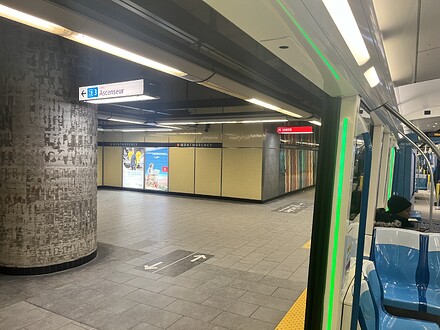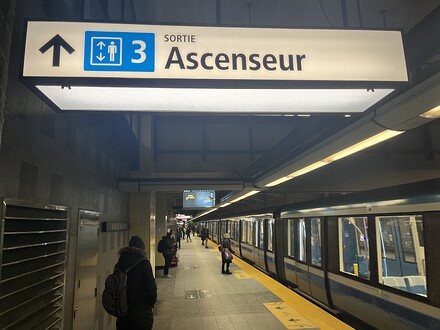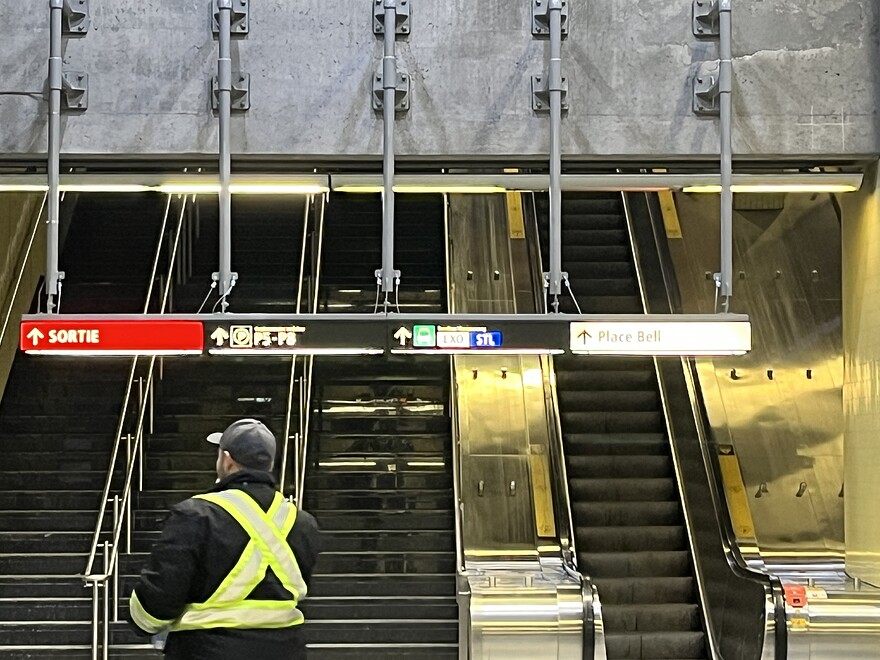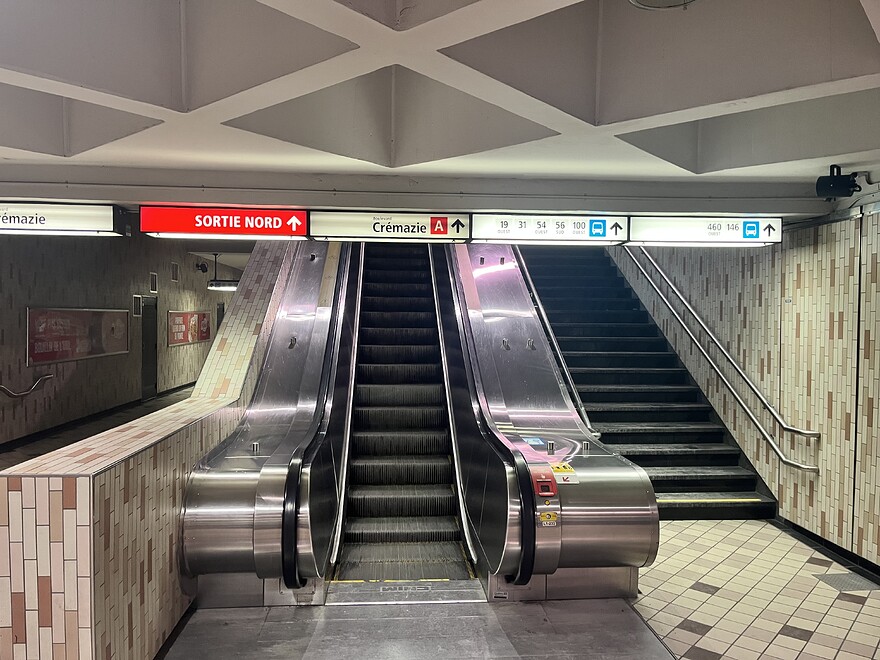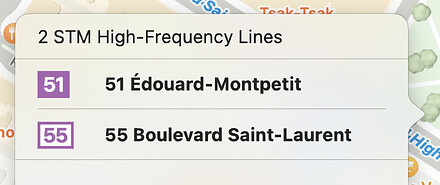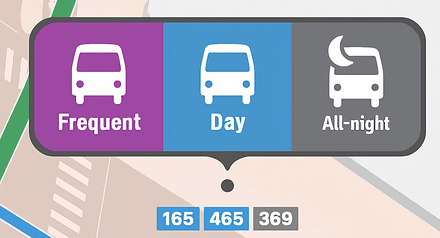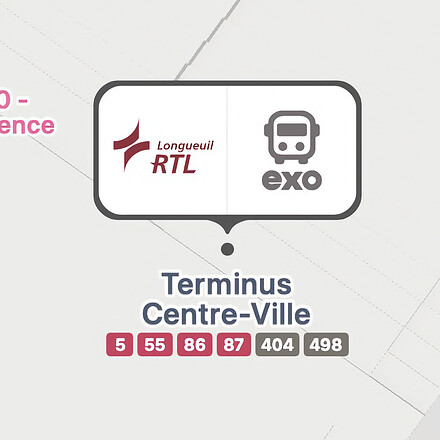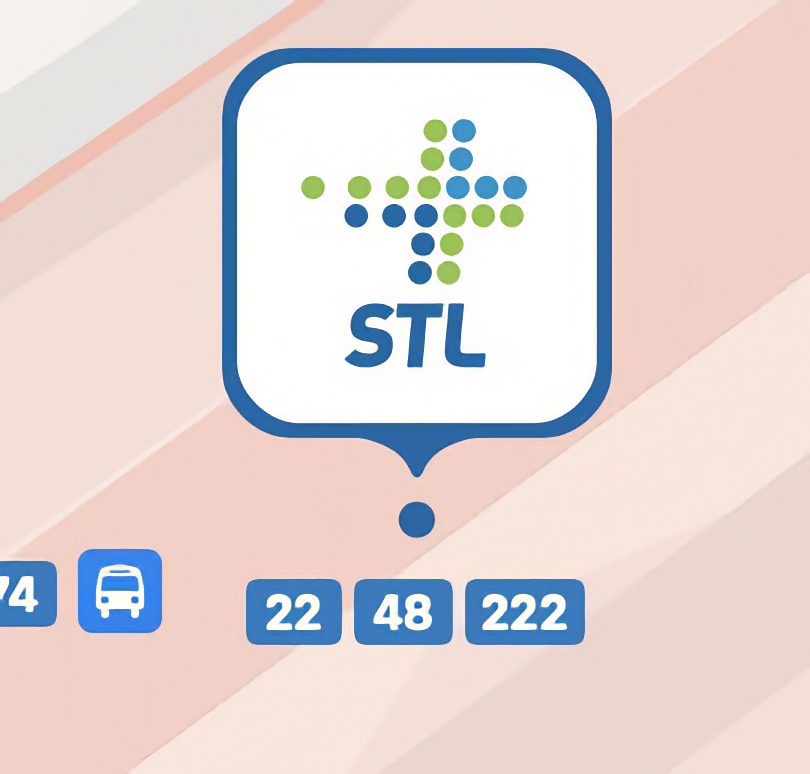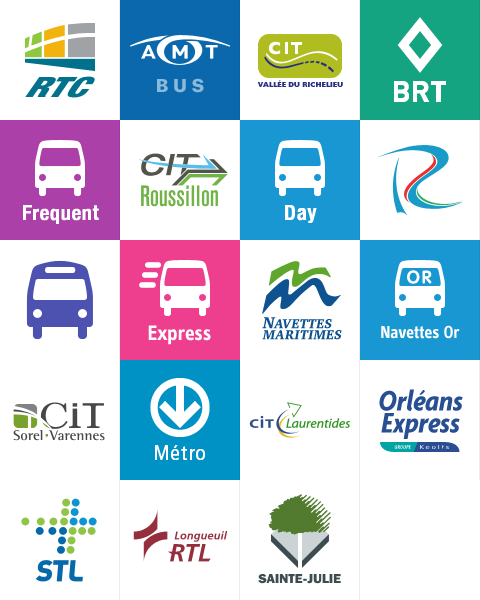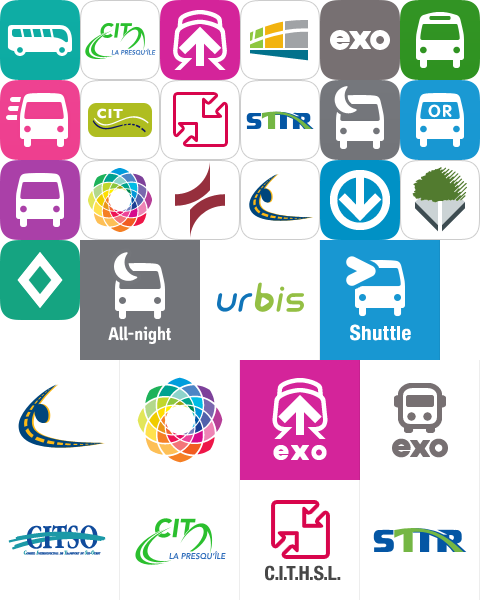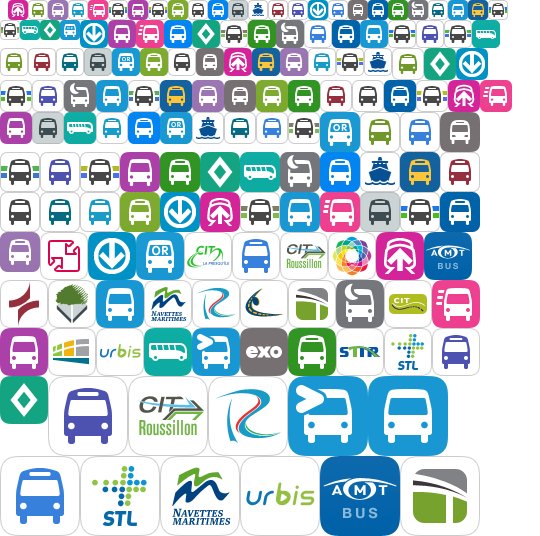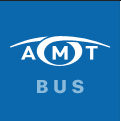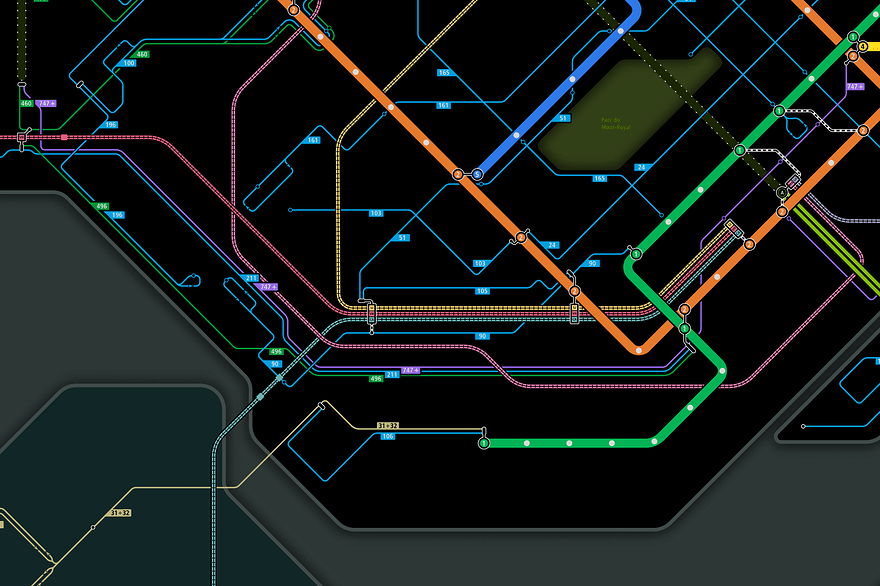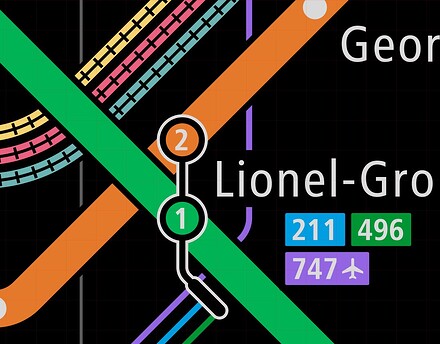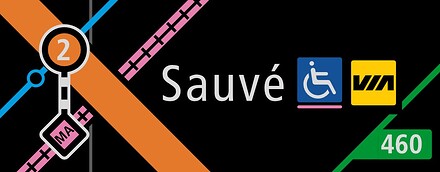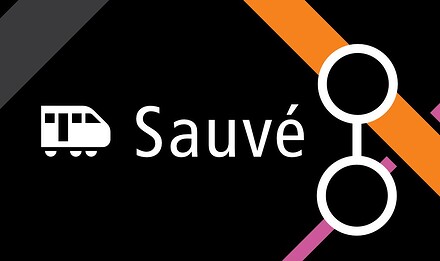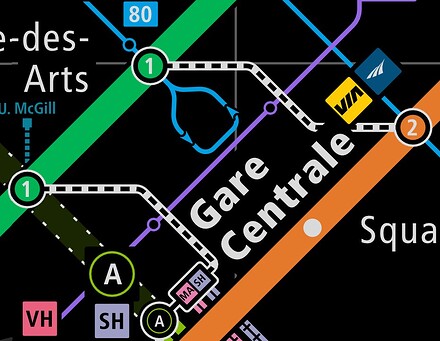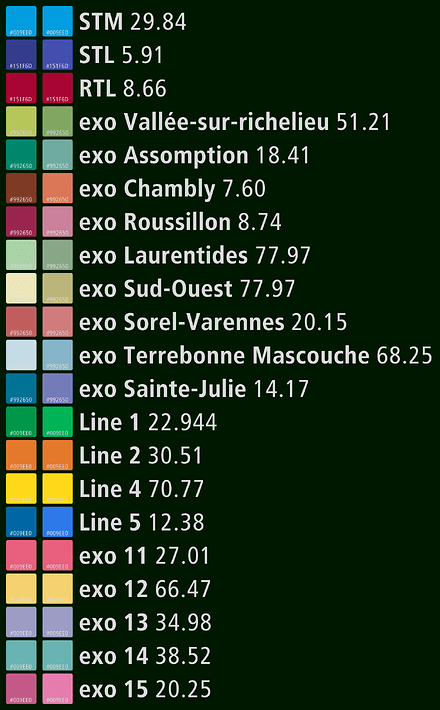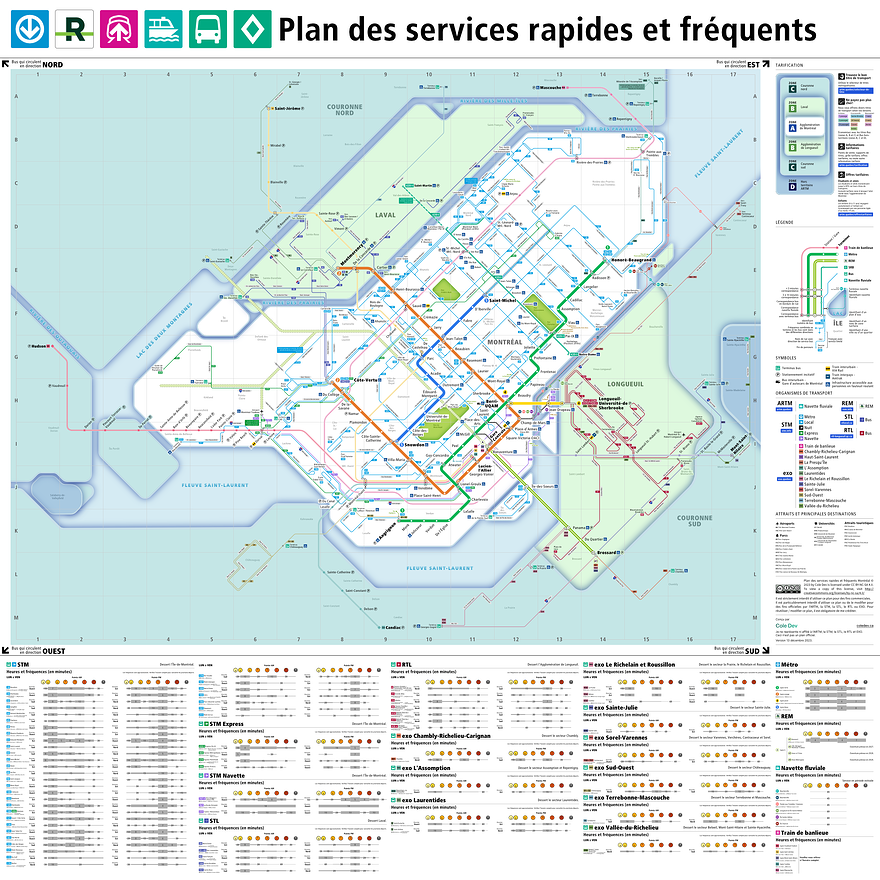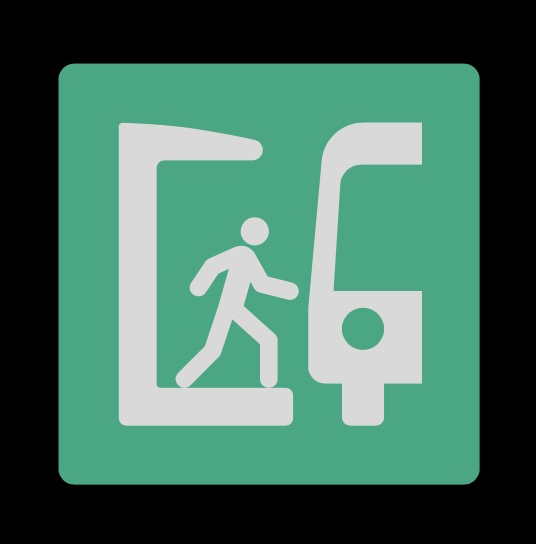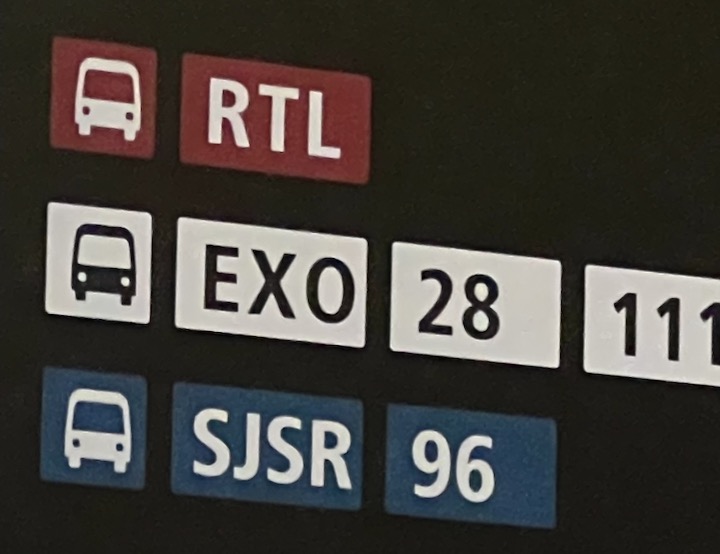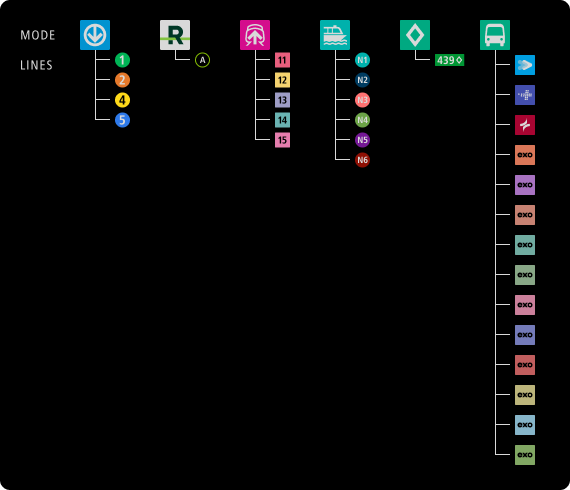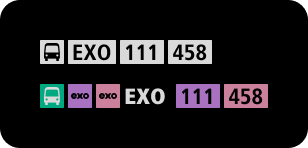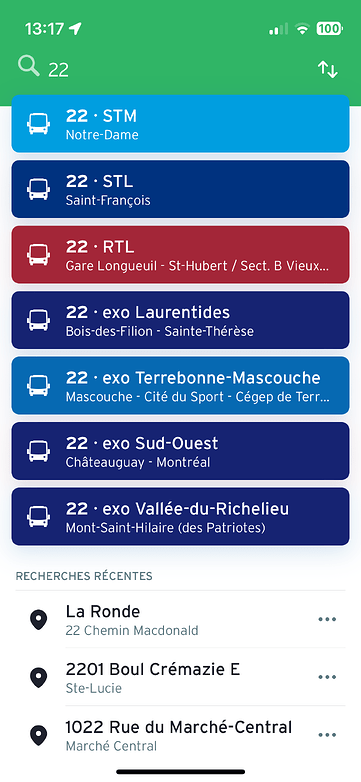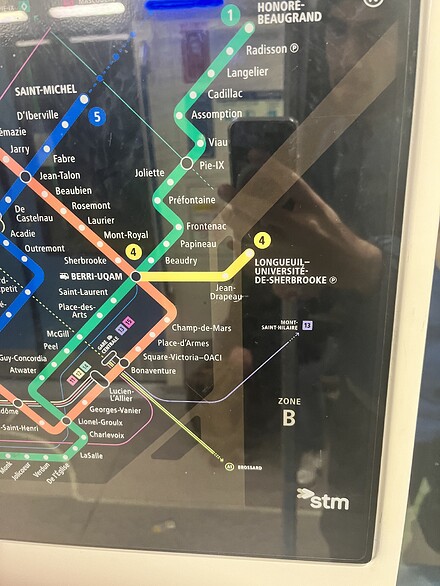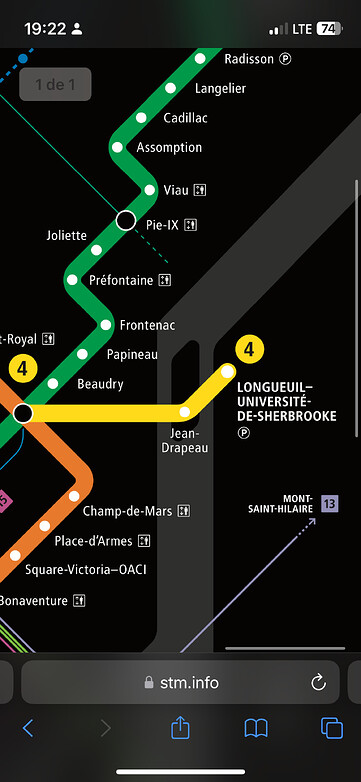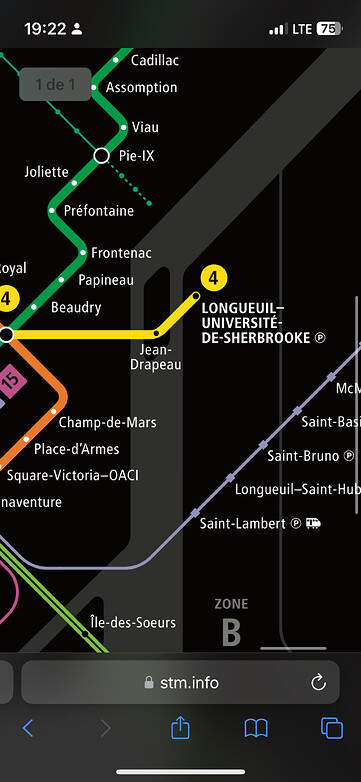A regional fast and frequent service map.
As you can see with my previous message, I have also been working on this project with the free time I had for the past year on and off.
Download:
I have 4 versions of the map: Light & Dark of the entire Greater Montreal frequent routes, Light & Dark of just STM’s purple/frequent buses.
Download PDF & SVG versions
Goals
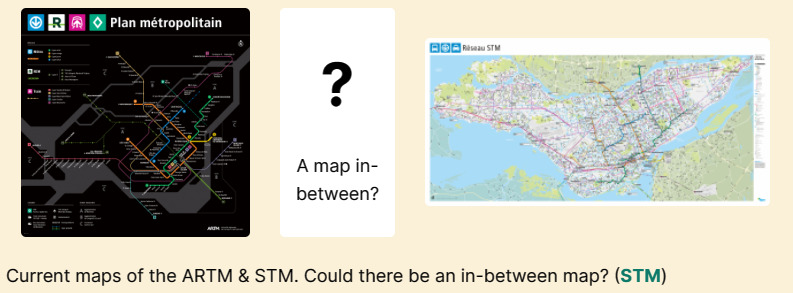
The main goal with my map is that I wanted to highlight all the frequent bus routes in the entire region, including STL’s, RTL’s and EXO’s frequent bus routes/corridors. I probably have missed some, but I tried to include the majority of them. The reason behind this is because ever since 2012, STM’s bus ridership has been dwindling, and perhaps giving some more prominence to them, could spark some additional ridership and as well show that transit can get to more places then people think.
Some improvements I want to highlight.
Interchange Blobs
I’ve added blobs that include the line numbers/names that they correspond to, as well as showing a connected bus blob if there is a bus terminal or just a circle if there is just a on-street bus stop.
Many asked why does Sauvé has a disconnected two-part blob. It’s because it is a long transfer (about six to seven minutes to go between platform to platform). I wanted to better highlight this feature (as well add it to the legend), where a dashed line (such as Sauvé) meant that the connection time is more than 3 minutes, and the solid connection line (such as Lionel-Groulx) means that connection time is less than 3 minutes. This information I thought was quite useful, as people can’t expect the same transfer experience at Lionel-Groulx between metro and bus lines, and Lucien-L’Allier, because the transfer time is well north of five minutes, and they could miss their train because they did not budget enough transfer time since they did not know the transfer length.
Some downtown stations are connected through the underground city. Therefore, I placed two of these connections on the map, as sometimes it could be faster than taking the metro via Lionel-Groulx or Berri-UQAM.
Fare zones.
There is some ambiguity in the official Plan Métropolitain map where you don’t quite know if Île-Bigras and Île Bizard are in zone A or B. I have cleared up this through slightly different shaded areas.
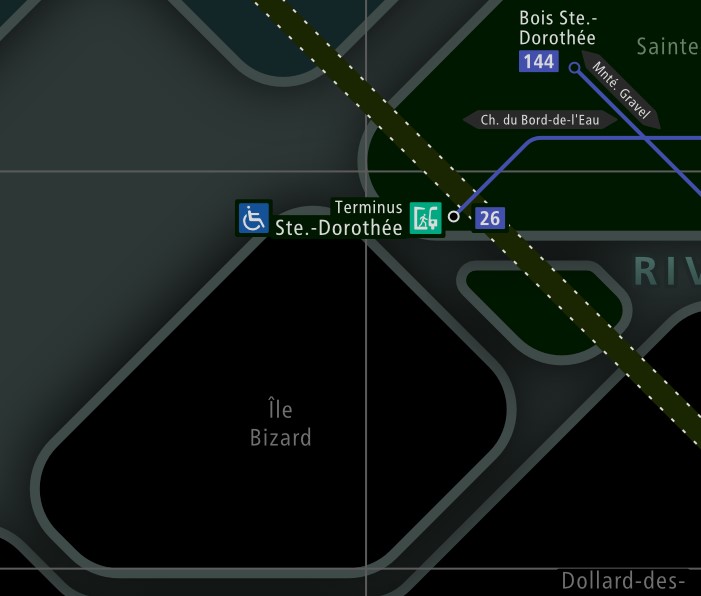
Correcting the color hierarchy
Colors can affect the prominence of certain lines. For example, when you look at the official map, it seems that the yellow line has more prominence than the blue line. I also adjusted the color of almost every OPTC (and giving each exo sector it’s own color), so that they appear less prominent and do not take over the map.
Far left is original color, just to the right of that is the adjusted color and to the far right is the original perceived luminence of each line.
Frequency legend
One important thing that is missing, in my opinion, from a lot of frequency maps is that they do not show how frequent the bus actually comes. For example, the bus can come every 5 to 10 minutes mid-day, but on evenings every 30 minutes or there is no service at all. This is useful, especially when the user needs to reroute themselves if something goes wrong, so they can know quickly if there is a bus coming soon or not without the need to look at a schedule. I wanted to create a way to communicate this simply, per route.
STM 18 and 24 bus routes are some of the most popular, yet they run only every 30 minutes in evenings.
Continue reading
If you want to read the entire story behind my different versions and want some tips and tricks to start your own map, well I have compiled an article that hopefully someone will find helpful:
The case for a regional fast and frequent service map. - Cole Dev
What do you guys think of the idea of having this in between map? Which possible bus corridors I should have left off/added? What should I have improved/did less effectively?
(Si tu veux lire l’article en français, il suffit de cliquer sur la globe en haut à droite du page)
